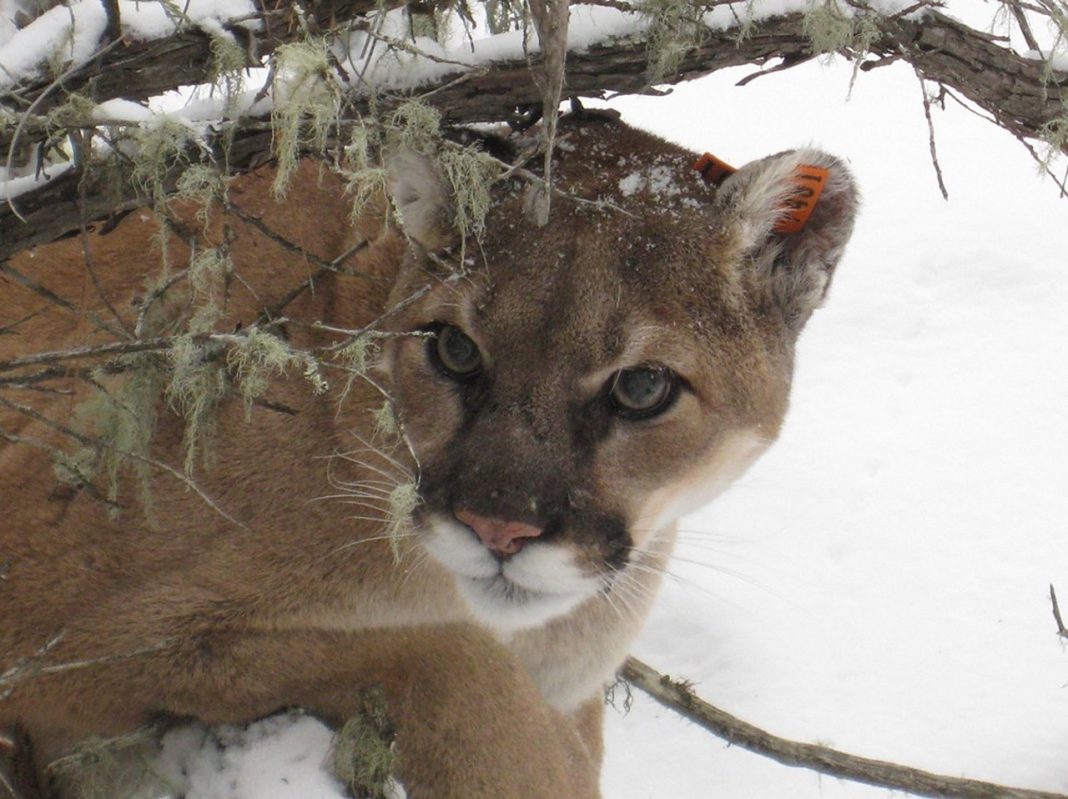In the winter of 2019 Dr. Daniel Stahler, a Yellowstone biologist helped collar a four-year-old male cougar. The main goal of the study was to track a Yellowstone cougar’s diet. The mountain lion known as M220 has had a busy late spring and summer. Dr. Stahler and other biologists have been tracking M220’s habits since May 3rd. During the last two months, M220 has battled older males and was able to claim his home territory. The home range is about forty square miles all centering around Black Canyon on the Yellowstone River. Following his taking over of a home range, he has been busy taking advantage of the park’s herbivores.
In two months’ time, M220 has made seventeen confirmed kills. M220 has mostly targeted the large elk population in the area. His hunting has yielded him fifteen elk kills. The kills fall into the following groups, four cows, two yearling bulls, six newborn calves, and one unknown elk. M220 also successfully killed a fawn and an old doe mule deer, during the last two months. This kind of behavior is not normal for most mountain lions during an average year. Dr. Stahler and other biologists suggest that most cougars will make a kill every seven to ten days.
“Ultimately the objective of this work is to study predation patterns, food habits, and the kill rate of the cougar. How often are they killing? What are they feeding on? That leads into a long-term monitoring program that helps biologists understand the role that cougars play in this legendary ecosystem.”-Dr. Daniel Stahler, Yellowstone Biologist
Why is M220 so prey happy?
Dr. Stahler and his team began hiking into cached radio collar data points to try and understand M220’s behavior. Locking onto logged data point clusters, the team was able to examine many of the kill sites. During the search, Dr. Stahler found a new unknown kill site that will be added to this Yellowstone cougar’s diet. It’s the remains of a young calf elk, M220’s eighteenth kill in two months. Following a trip back to the most recent known kill site and checking the GPS collar data, this young calf was killed only fifteen hours after M220 killed a bull elk. Following an investigation of the bull elk kill site, the team finds that M220 was most likely pushed off of his kill by a black bear. If this was the case it may explain while he killed another elk so soon after the bull elk kill.
Dr. Stahler has come to the conclusion, that M220 is being pushed off of about 50% of his kills by bears. Dr. Stahler calls what he is doing “CSI: Yellowstone” it is about piecing a story together by using the physical evidence and data trends. Biologists and wildlife officials have been working like this for over sixty years. However, current biologists have the blessing of new technology, like GPS tracking collars.
“When a cougar makes a kill, they tend to cache it and stay on it for a few days before they’ve eaten the entire carcass. An adult cow elk might take them four to five days to devour, it might be half that for a calf. We have this rich evolutionary history with these animals. Our ancestors competed with them for space and food. They killed us. We killed them. It still happens today. They represent this stubborn, nagging conflict, and they can be very difficult to live with, there’s no doubt about it. If we look at the history of carnivores in the last few hundred years, it’s really shifted from complete persecution to a better understanding.”-Dr. Daniel Stahler, Yellowstone Biologist















